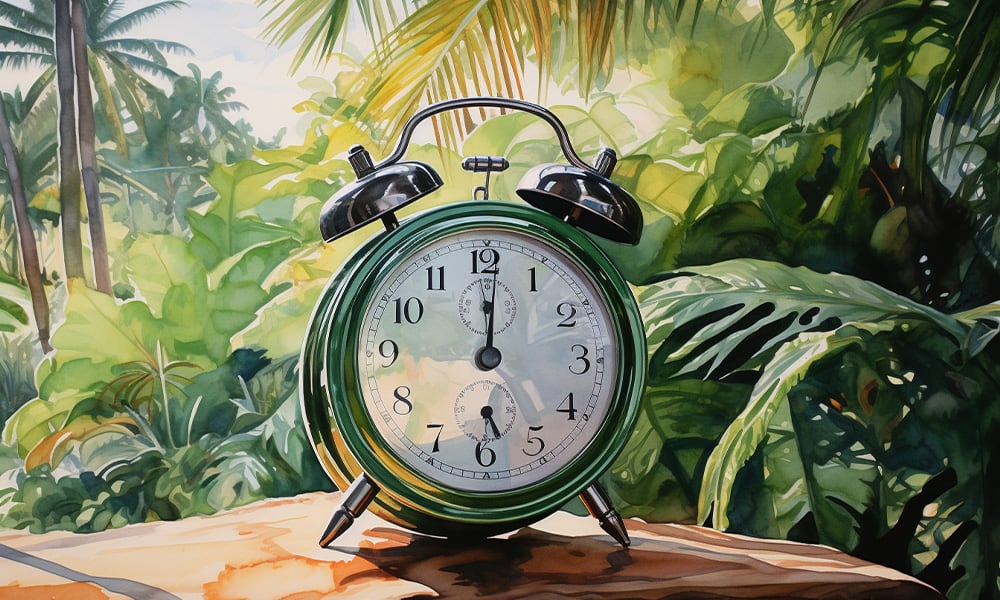The recent turning back of the clocks in North America reminded me that when I first arrived in Costa Rica, the country was experimenting with its own version of daylight savings.
On the surface, it made no sense. At nine degrees north latitude, our proximity to the equator guarantees very little variation in sunlight throughout the year. Here are the numbers for 2023, using the solstice dates. June 21 is the day with most sunlight and December 21, the day with the least sunlight:
- June 21 sunrise 5:22am sunset 6:07pm
- Dec 21 sunrise 5:55am sunset 5:26pm
The difference between the day with most and day with the least sunlight is only 74 minutes. So why did Costa Rica temporarily experiment with turning the clocks forward an hour?
According to reports at the time, those in power believed that matching Costa Rica’s time zone with that of the United States would be “in tune with all the realities of a world with a globalized economy.” There were also claims of energy savings, though the additional light gained would be negligible.
It brought to mind the quote attributed to an Indian chief, who said, “Only the white man’s government would be so stupid as to cut a foot off the top of a blanket, sew it onto the bottom, and think they have a longer blanket.”
Sometime in the 1990s common sense returned and the daylight savings order was dropped. They had found that the daylight savings experiment resulted in a barely 1% drop in energy consumption. If clocks moved forward an hour, children walking or busing to school would do so in the dark.
It also disrupted the schedules of thousands of school children, who were suddenly walking to school in the semi-darkness. Similarly, tens of thousands of farmers and construction workers had to either start work in the dark, or wait until dawn, with the subsequent loss of productivity.
It was a classic example of the government trying to do something, just to show that it is doing something. Not only was it senseless and unnecessary, but also brought a lot of confusion, because I distinctly remember most people simply ignoring the directive.
I taught English to business people at the time, and nobody in the private sector had turned their clocks forward. On the bus, I would sneak looks at people’s wristwatches, and I could tell who was in the private sector, and who was in the public sector. Those in the private sector were an hour behind the “official” time. People that worked in the public sector– teachers, bureaucrats, caja medical people, were an hour ahead. It was all as confusing as it sounds.
Essentially, the public sector had its own time zone. I remember my boss at the teaching job stressing to me that nobody we worked with had set their clocks forward and to not pay attention to any clocks or watches set an hour ahead.
So my 8am class was 9am as far as the government was concerned, and so on. Sometime later in the year, as the summer solstice approached, smarter heads prevailed, and the clocks were turned back an hour, applicable only to those who had set them forward in the first place.
And then, as now, all clocks and watches were synched to the same hour, and we all were back to living under Tico Time.






